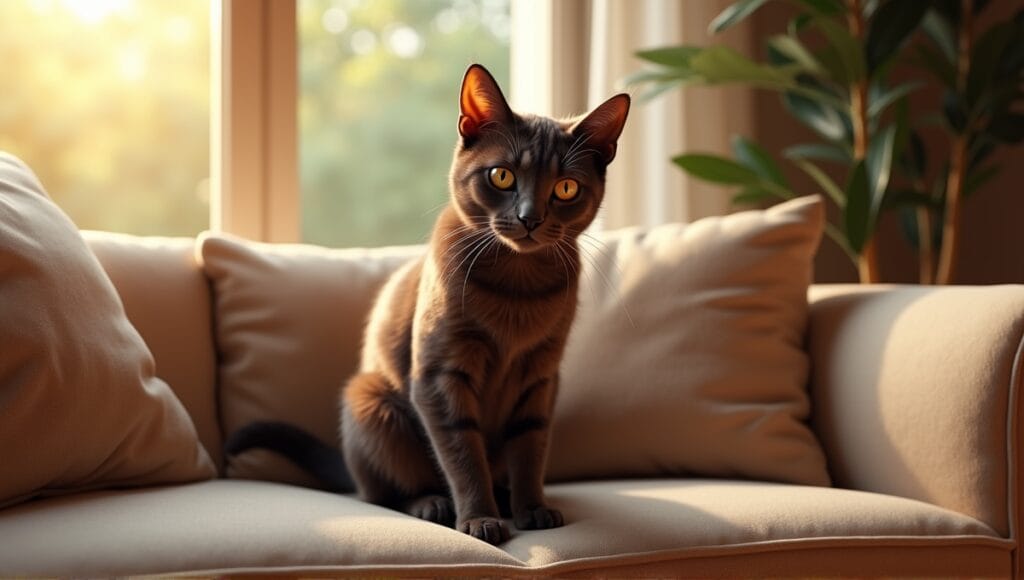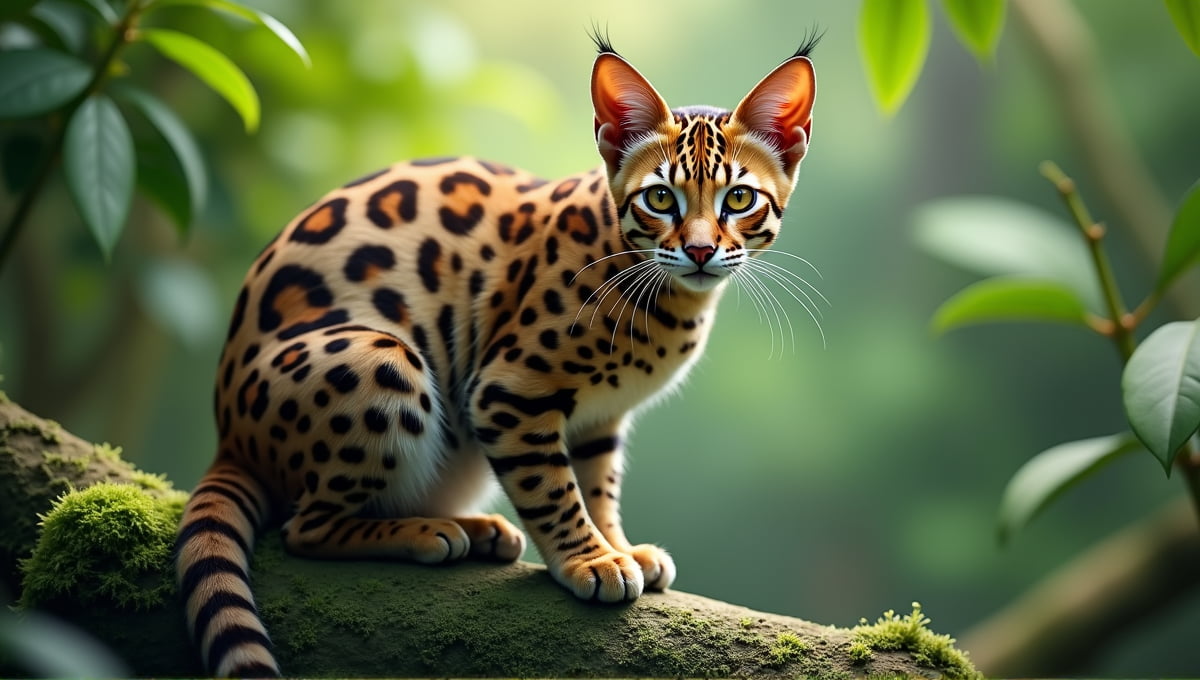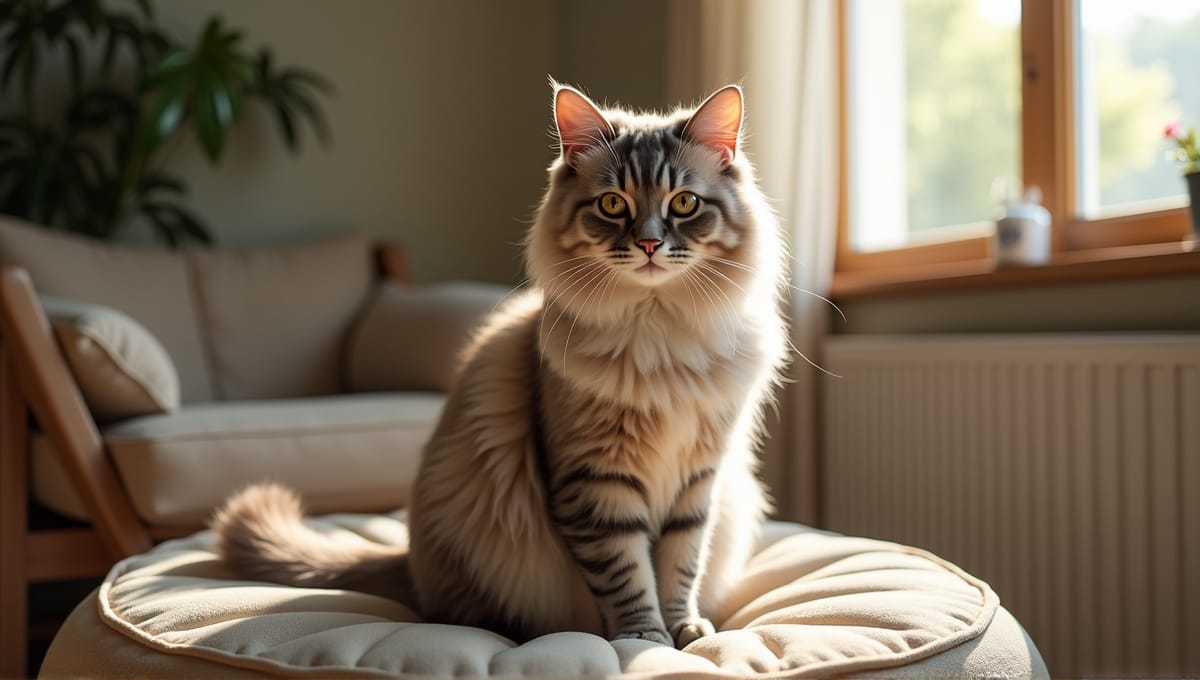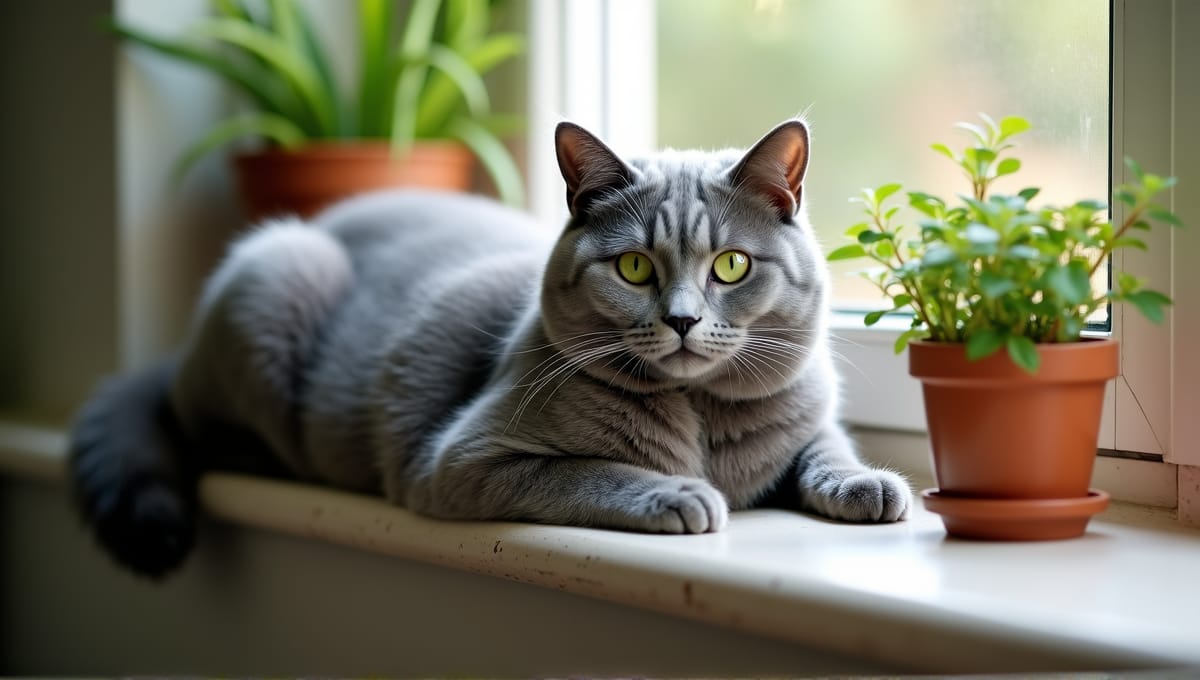Being a lifelong cat lover, I’ve come across many Havana Brown cats, and to me, these are some of the most beautiful cats with their warm brown coats and stunning green eyes. They’re relatively rare, though.
So is the Havana Brown the best cat for you and your family? Here are some distinctive characteristics of this breed to help you determine if a Havana Brown might be the ideal cat for you.
Cuban Chocolate Feline: A Breed Profile
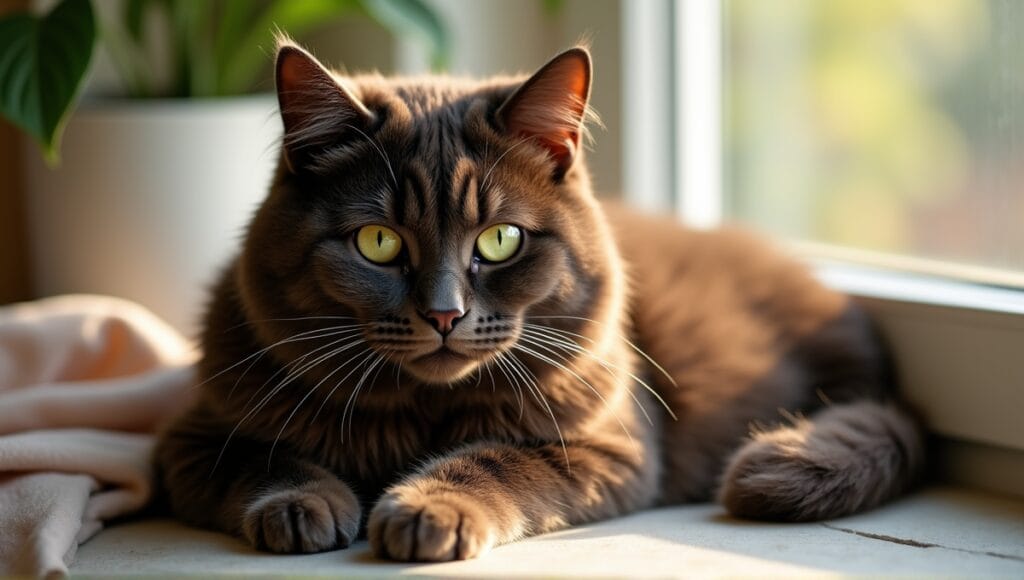
Havana Brown cats are an intriguing breed. They have a very distinctive appearance and personality, and they certainly make a name for themselves in the cat world. I’ve had the opportunity to meet several Havana Browns over the years, and I’m always impressed by them.
Here are some of the unique physical traits of Havana Brown cats:
- Beautiful, rich mahogany brown coat
- Striking, vivid green eyes
- Medium-sized, muscular body
- Long, elegant neck
What really makes Havana Brown cats stand out is their head, which is shaped like a corn cob. The head of the Havana Brown is a quality you won’t see in any other breed. They also have a unique muzzle with a very slight pinch at the whisker break.
The history of the Havana Brown is quite interesting:
- The breed originated in England in the 1950s.
- Breeders developed the Havana Brown through selective breeding.
- The goal was to create a solid brown cat.
- The breed gets its name from the Havana tobacco color.
A significant moment in the breed’s history came in 1964 when the Cat Fanciers’ Association granted the breed championship status. This recognition solidified the breed’s place in the cat fancy world.
Havana Brown cats are a rare gem in the feline world. Their unique appearance and delightful personality make them a delight to be around. If you’re thinking about adding a Havana Brown to your family, you’re in for a real treat. They share some similarities with other asian leopard cat descendants, though they have their own distinct characteristics.
Origins and Development of the Havana Brown
The Havana Browns originated in the 1950s when a group of cat enthusiasts in England set out to create a unique breed. They wanted a cat that was solid brown and had Siamese-like features.
To accomplish this, breeders crossed black domestic cats with chocolate-point Siamese cats. The result of this crossing is the beautiful Havana Brown we know today. It’s a medium-sized cat that borrows the best qualities from each of its parent breeds.
Key players in the development of the breed include Elsie Fisher, the Baroness Von Ullmann, and Mrs. Armitage Hargreaves. These breeders worked tirelessly to define the breed’s look and characteristics, and their hard work paid off as the breed gained recognition and popularity.
The breed has since evolved, and the breed standards have changed over the years. Initially, breeders were primarily concerned with simply achieving the right coat color. Today, the breed standards incorporate a variety of physical and temperament attributes, ensuring that the breed remains distinctive while also healthy and vibrant.
The creation of the Havana Brown is an excellent example of breeders’ vision and hard work. They achieved their goal, and the breed still captures the hearts of cat lovers today. This cat breeding process is similar to how other unique breeds, such as the bengal cat, were developed.
Rarity and Genetic Considerations
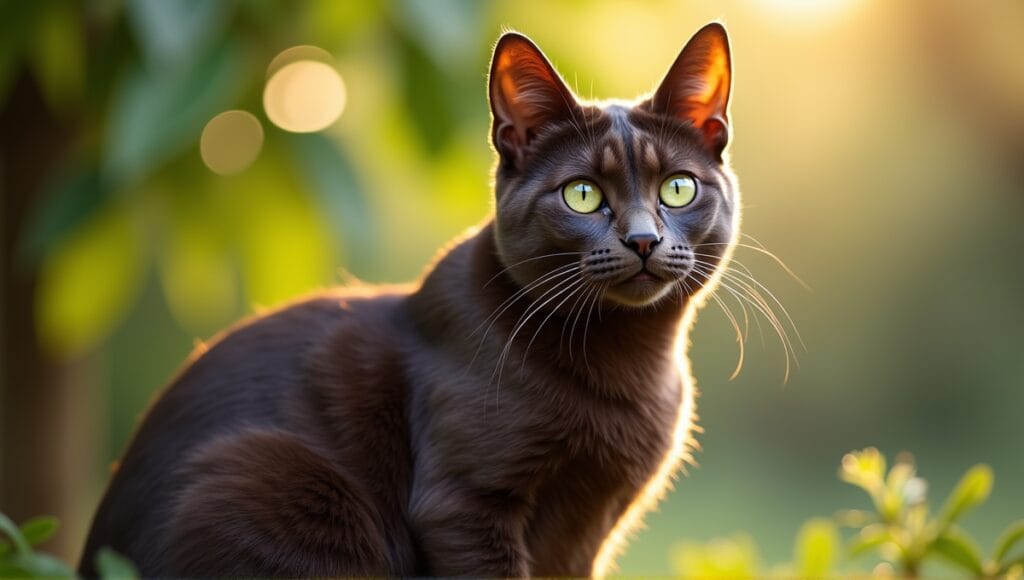
Havana Browns are a unique and special breed in the cat world. They are one of the most rare breeds recognized by the Cat Fanciers’ Association. While I’ve worked with cats for many years, I’ve only come across a small handful of Havana Browns.
The reason you don’t see Havana Browns very often is because the breed has a very limited gene pool. With such a small genetic pool, breeders and enthusiasts face a delicate balancing act. On one hand, they must preserve breed standards. On the other hand, they must ensure genetic diversity.
To accomplish this balancing act, breeders practice something called outcrossing. Here’s how it works:
Breed with black or blue domestic shorthairs
Introduce chocolate or seal point Siamese
Select breeding pairs carefully to ensure the offspring still look and act like Havana Browns
Outcrossing is essential to the breed’s long-term health. Without it, genetic issues would become widespread. However, outcrossing is a complicated process that requires careful planning and execution.
Maintaining genetic diversity in Havana Browns is a continuous effort. Breeders and cat associations collaborate to ensure the breed will exist for years to come. Their primary mission is to maintain the specific characteristics of Havana Browns, while still keeping the breed genetically healthy.
If you think the Havana Brown might be the right breed for you, it’s important to be aware of its rarity. Finding a reputable breeder might be more challenging, but the result is a unique and beautiful feline friend that you won’t find anywhere else. Like other exotic cat breeds, Havana Browns require special consideration before bringing them into your home.
Disposition and Character of This Cuban Feline
Havana Browns are delightfully pleasant cats. They have a personality as charming as their appearance. These cats are best known for being friendly and outgoing.
In my opinion, Havana Browns are very social cats. They adore their human family members and you’ll often see them shadow you around the house as they want to be involved in whatever you’re doing.
Havana Browns are also highly intelligent cats. They’re curious and enjoy exploring. Many Havana Brown owners mention that their cats love puzzle toys and interactive games.
Havana Browns are also typically good with:
- Children
- Other cats
- Dog-friendly households (with an acclimation period)
- Being the center of attention
However, each cat is an individual, and some Havana Browns prefer to be the only cat. As with any cat you bring into your home, always evaluate how it’ll fit into your specific family and pet environment.
Another thing Havana Browns are known for is their soft, unique vocalizations. They’re not a particularly chatty breed, but they do like to talk to their humans. Your Havana Brown might use a quiet chirp or trill to communicate with you. This vocal trait is similar to some oriental shorthair cats, though generally less intense.
Distinctive Physical Features of Havana Browns
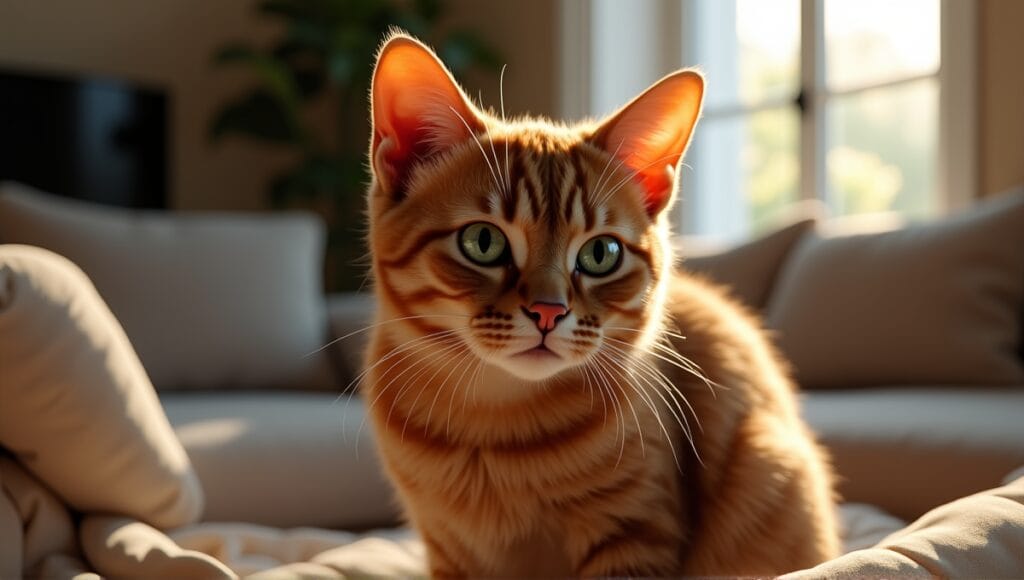
Havana Browns are truly a feast for the eyes. They have some very unique defining features that set them apart from other cat breeds. Let’s take a closer look at what makes Havana Browns so special.
The Havana Brown’s coat is its most defining attribute. It’s a beautiful warm mahogany brown color, much like a good Cuban cigar. It’s short, smooth, and lies close to the body with a glossy sheen. When you run your hand over a Havana Brown, you’ll notice it feels like satin.
One of the most unusual characteristics of the Havana Brown is its head shape. It’s often referred to as ‘corn cob shaped,’ which is a surprisingly accurate description of their head shape. This unusual head shape creates a very distinctive profile you won’t see in any other cat breed.
The eyes of a Havana Brown are equally breathtaking. They are a brilliant green color that provides a beautiful contrast to the brown coat. The eyes are almond-shaped and lean slightly towards the ears.
In terms of their body, Havana Browns are medium-sized cats with a sturdy, muscular build. Here’s how they compare to a few other popular breeds:
| Breed | Average Weight | Body Type |
|---|---|---|
| Havana Brown | 8-10 lbs | Medium |
| Siamese | 8-10 lbs | Long and lean |
| Maine Coon | 10-18 lbs | Large and sturdy |
| Russian Blue | 7-12 lbs | Medium |
As you can see, Havana Browns fall right in the middle of the pack in terms of size. They are substantial enough to give you the comforting feeling of a lap cat, but not so large that they’re cumbersome. Their size and build are somewhat similar to the burmese cat, though their coloration and head shape are quite different.
Havana Brown Health and Lifespan
Havana Browns are a relatively healthy breed. With proper care, they can live an average of 12 to 15 years, though some may live into their late teens or early twenties.
While they are a hardy breed, there are a few health problems to monitor:
- Upper respiratory infections
- Calcium oxalate stones
- Gingivitis
These aren’t specific to Havana Browns, of course, but keeping an eye on them can help catch any health issues early. Regular check-ups with a veterinarian are essential to maintaining your Havana Brown’s health.
Genetic health issues in Havana Browns are somewhat uncommon. However, because of their limited gene pool, there’s always a risk of a breed-specific health problem arising. This is why it’s so important to only support ethical breeding practices for the Havana Brown.
I cannot emphasize enough the importance of regular vet check-ups for your Havana Brown. These visits will help you catch any health issues early and also give you an opportunity to discuss nutrition, grooming, and general care with your vet.
Caring for Your Havana Brown
Caring for a Havana Brown is a fun and easy experience. While they don’t require much maintenance, they do have some specific needs.
Grooming a Havana Brown is simple. Their coat is short, so you won’t need to do much. I find that a soft brush each week is usually enough. Not only is this great for keeping their coat looking nice, but it also doubles as bonding time.
In terms of diet, Havana Browns don’t have any breed-specific diet needs. However, make sure you select a quality balanced cat food. For your specific cat, it’s best to consult with a vet to determine the best diet.
Havana Browns need exercise and playtime. They are an active breed and enjoy interactive play. A few ideas to keep your Havana Brown entertained include:
- Puzzle feeders
- Wand toys
- Cat trees
- Cardboard boxes
Environmental enrichment is critical for Havana Browns. They are intelligent animals and require mental stimulation. This might involve rotating toys, offering scratching posts, and creating safe outdoor viewing spaces.
Keep in mind that each cat is different. Pay attention to your Havana Brown’s likes and preferences, and adjust your care routine accordingly. With some love, attention, and care, your Havana Brown will be a happy and healthy cat. If you’re considering other breeds, you might also want to learn about the persian cat, which has different care requirements due to its long coat.
Final Thoughts
The Havana Brown is a rare, enchanting breed. I’ve personally witnessed these mahogany charmers win people over with their beautiful appearance and playful nature. Their distinct characteristics, from their corn cob shaped heads to their piercing green eyes, make them truly special. While they do have some health and genetic issues as a result of limited breeding stock, they’ll live a long, happy life with proper care.
Just keep in mind that you’re not just buying a pet. You’re adopting a smart, affectionate friend. And in return for your investment, the Havana Brown will provide years of love and joy.


